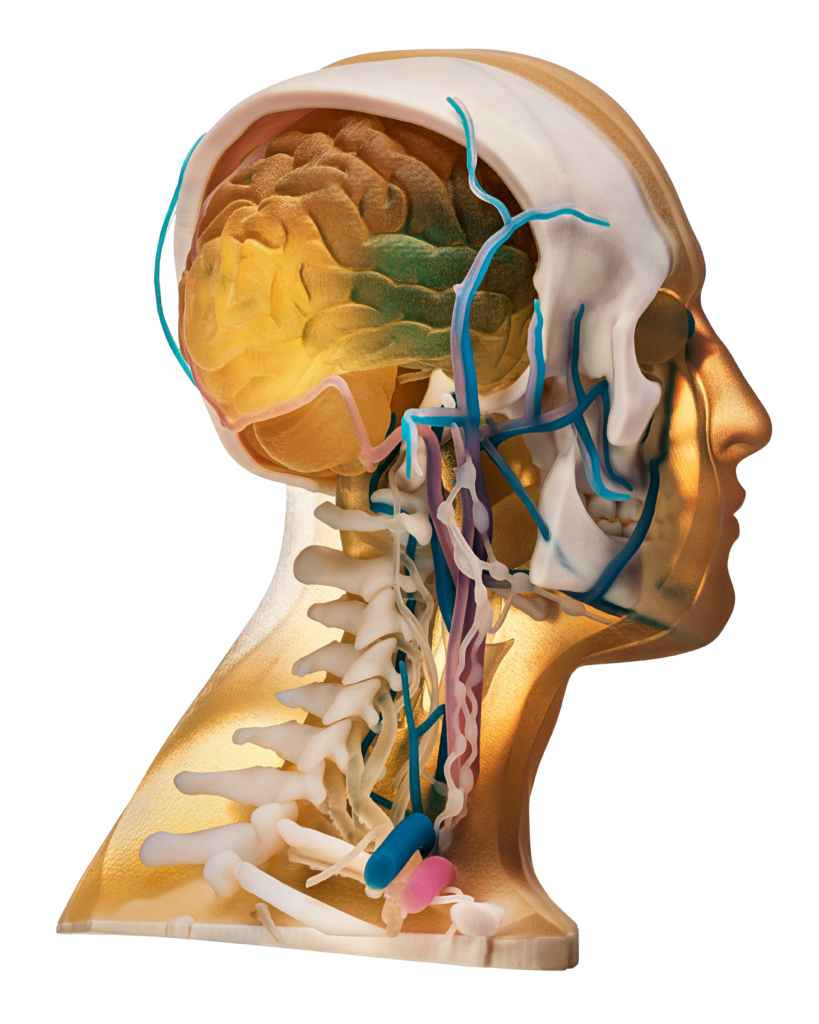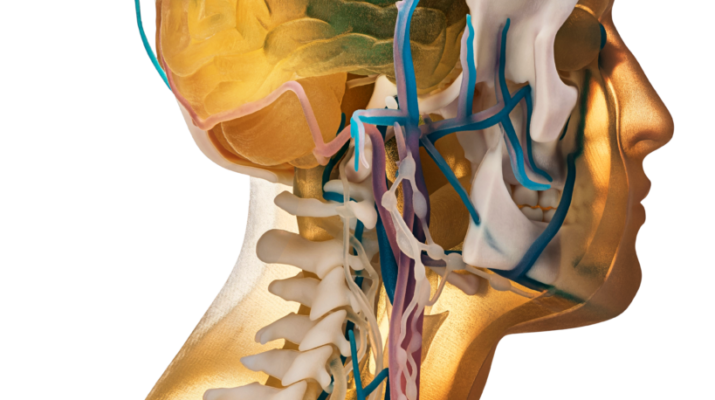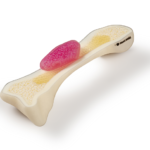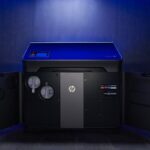

Stratasys Direct Manufacturing announced the opening of a dedicated healthcare print center at its recently inaugurated PolyJet Design and Print Center in Eden Prairie, Minnesota. The new addition expands the company’s on-demand offerings to the healthcare industry to include anatomical modeling, full-service anatomical model design, and consulting services, including design transfer and process validation. This is one of several announcements made by the industrial 3D printing manufacturer at the RAPID + TCT 2021 conference, which ran from September 13 through 15 in Chicago.
The Healthcare Print Center in Eden Prairie has Stratasys J750 Digital Anatomy printers, which allow company engineers to produce life-like, 3D printed medical and dental anatomical models for medical device manufacturers and healthcare providers. Launched in November 2019, the J750 Digital Anatomy printer creates human anatomy models that mimic bone, vasculature, and organ tissues’ actual feel, responsiveness, and biomechanical properties to an unprecedented level of realism. These features allow customers to recreate pathologies and minimize the use of cadavers or animals for clinical trials and surgical training.
In the first 13 weeks of operation, as part of an invite-only beta service for top medical device manufacturers, Stratasys Direct has already 3D printed over 1,000 models, with each machine running more than 120 hours a week. In addition, working alongside its beta customers, Stratasys Direct created anatomical models for product demonstrations, physician surgical training events, and internal product development activities, hoping to open new possibilities for complex, anatomically accurate models at less cost than traditional manufacturing methods.
Hospitals, healthcare providers, and medical schools already use these lifelike 3D models for device testing, medical training, or surgical preparation and consultation, including practice dummies, educational aids, and preoperative planning. In fact, Stratasys Americas President Rich Garrity said the addition of Digital Anatomy printers to Stratasys Direct would offer companies with previously limited access to these printing capabilities the chance to use its manufacturing services for 3D printing exact anatomical models they need.

For example, users can choose the printer’s pre-programmed cardiac or vascular applications, automatically selecting the materials needed based on the settings chosen for a specific reproduction, allowing what Stratasys describes as an “accurate experience of procedures,” such as cutting and suturing, device placement and patching. The machine can produce cardiac models that replicate very fine anatomy, like cordae tendinae, valve leaflets, and annuli or replicate vascular models’ feel, function, and dimensions that recreate both healthy and diseased vessels.
Known for pursuing next-generation technologies to help treat vascular disease, the Jacobs Institute (JI) in Buffalo, New York, has leveraged 3D printing for years to create realistic medical models that can validate new devices and help medical teams prepare for difficult procedures. Now the JI relies on Stratasys J750 Digital Anatomy platform and materials to achieve a new level of realism. In fact, the American-Israeli firm said three new materials specifically designed for medical modeling applications set the Digital Anatomy printer apart from other solutions.
The niche of medical model 3D printers is dominated by a group of renowned companies in the industry, including Stratasys and its J750; Ultimaker’s S5 printer, which is certified by Materialise; Mimaki’s popular printers used for medical modeling; BCN3D’s professional desktop FFF printers which help doctors fabricate biomodels; and a handful of companies that have a long history developing medical models like EnvisionTEC (which was acquired by Desktop Metal early in 2021), 3D Systems, and HP’s 3D printers.
Using powerful Digital Anatomy software and materials like GelMatrix, a support substance designed for easy removal from vascular models with small inner diameters and thin walls, or the incredibly soft, translucent TissueMatrix material, ideal for replicating the look and feel of heart tissue that has helped healthcare providers improve surgical preparedness. The company even created a complex material that mimics porous bone structures, fibrotic tissues, and ligaments, providing realistic feedback when cutting and drilling. Dubbed BoneMatrix, it is ideal for orthopedic applications, a significantly increasing market within the healthcare industry.
A year after launching the J750 Digital Anatomy printer, Stratasys said it was successfully sold and installed at healthcare institutions and medical service providers in major markets across the globe, including Seattle Children’s Hospital, the U.S. Veterans Affairs (VA) Health Care System, Nicklaus Children’s Hospital in Miami, Medilife and BIO3DModel in Italy, and Tknika and AIJU in Spain.
When it comes to 3D real estate visualization in the USA, our service provides the perfect solution for bringing property listings to life. Through our platform, you can easily access cutting-edge 3D renderings that showcase your real estate projects in a way that attracts potential buyers and investors. Whether it's residential, commercial, or mixed-use properties, our team of experts uses advanced technology to create immersive visualizations that highlight the best features of your property, making it easier for clients to imagine the space as their own.
Through our website, you can quickly get high-quality 3D real estate visualizations that are tailored to your specific needs. With our help, you'll stand out in the competitive real estate market by offering potential buyers a realistic, interactive view of your property. Our efficient process ensures a fast turnaround time, while our attention to detail guarantees that every aspect of the property is represented accurately, giving you a powerful marketing tool to promote your real estate listings.






